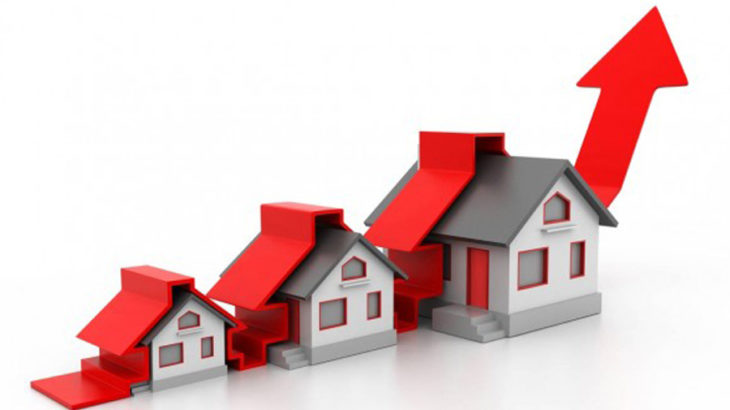While other businesses continue to try to adapt to the new post-pandemic norm, one industry that has been mostly unaffected is real estate. People are buying and selling homes and property, and realtors are there to help in person or virtually.
Although the market has stayed relatively consistent, 2024 has some new trends we’re watching. What’s going on in real estate, and how can you benefit from these changes?
Here are the top 5 real estate trends to keep an eye on so you can take advantage of them while the iron is hot!

Source: Pinterest.com
Contents
1. Green Accessories
Sustainable living is by far one of the biggest trends since the pandemic hit. The category covers everything from groceries to clothing to home decor.
Buyers and builders are capitalizing on this trend by adding green accessories where they can. For example, a prospective home buyer is just as likely to want to know about a house’s carbon footprint as they are the square footage of the property.
Businesses are accessorizing to target the sustainable market, too. One impressive example of this is seen with a company called FiveatHeart.
The founders knew that flexible work environments were the future long before COVID became a global force to make it happen. Companies that want to attract talent in Australia and across borders need to offer perks that people really want.
Right now, that trend says they want to be able to live healthy lives by eating well and riding their bikes to work. So, forward-thinking business owners are adding things to make this happen.
You’ll see bike racks and changing rooms, healthy food options in low-energy use vending machines, and other sustainable, eco-friendly accessories in corporate real estate transactions. This will be just a normal part of the job starting in 2024.

Source: timedoctor.com
2. Digital Everything
The real estate market is evolving to meet the demand for contact-free transactions. That means entire buying decisions, from start to finish, will be made without a buyer ever seeing the property in person.
This trend means a rise in tech companies designing software to make virtual property tours and contract to sign more efficient. You can expect to see client requests for 3D tours and realtors advertising them regularly. Drone video footage will replace photo galleries.
But the digitalization of real estate doesn’t end there.
Potential buyers will be using the internet to scour the neighborhoods, crime ratings, school districts, and other decision-making factors. This is already common, but in 2024, websites like Nextdoor will be stalked as house seekers look to see what their would-be neighbors are like.
Much of the contracting process is already digital. However, everything from finding a mortgage to transferring funds and exchanging keys will be transactions that happen behind the computer screen.
There’s a lot to be said for the personal touch. But if it could include deadly germs, people would prefer to stick with the type of virus only their computers can catch.

Source: unsplash.com
3. The New 1950’s: Migrating to the Suburbs Again
Not too long ago, the cities were the place to be. Sydney, Melbourne, and other meccas brought in tourists, jobs, and better opportunities.
But just like back in the ‘50s, suburbs are becoming the preferred living areas. Now, cities are closing up as people aim for wide-open lawns, property away from their neighbors, and less traffic.
City living is also more expensive. A post-pandemic society means job losses for millions of people around the world. It’s cheaper to live in a home where you get lower insurance premiums and property taxes, even if the house is comparably priced.
And it’s true that property prices for suburban homes are rising, while high-demand places in the city that used to cost an arm and a leg now sit vacantly. The migration is to the suburbs, and that trend isn’t going to change any time soon.

Source: StearnsElectric.com
4. Single-Family Lodging Options Are Scarce
Supply and demand are showing up strong in real estate trends this year as people search for single-family homes.
Heads of households who were happy with cheaper rental prices didn’t mind shelling out a monthly payment for a temporary home. But now, rent is skyrocketing, and it’s cheaper to pay a mortgage on a single-family house.
The problem is that those types of homes are limited and the demand for them is increasing.
Part of the demand is because so many people are now working from home, so they want a bigger space to merge their personal and professional lives. Lower interest rates and aging millennials looking to buy their first homes are two other variables.
No matter the reason, the reality is there is a limited supply and a large pool of potential buyers. This means construction managers are putting their focus to building more single-home houses, but the supply chain shortage is stalling progress.
In the meantime, if an affordable home in a residential area hits the market, you can bet it won’t stay there long.

Source: ocregister.com
5. Prices Will Keep Rising
When was the last time the real estate market saw a long-term plateau in home prices?
In 2010, Sydney saw a housing market crash as buyers left the city due to high property costs. But since the increased amounts are everywhere in 2024, it’s not likely to hit that low level again for a while.
Although the prices will keep rising, there will be more stability. Instead of a spike, it’s a gradual steady slope. The suburban homes will continue to be in demand. Now that there is more of a “controlled acceptance” about the pandemic, those who are brave enough will head back to the cities, too.
So, with a more equivalent spread once again, real estate prices will get somewhat back to normal. With the cost of living increase across the board, though, you’ll see real estate rates going up to compensate.
These Trends Look Rosy for Real Estate Investments
No matter which end of the real estate market you’re involved in or watching, the future looks bright. Focus on sustainable, eco-friendly investments and single-family homes, and you’ll be right on track with 2024’s trends.
